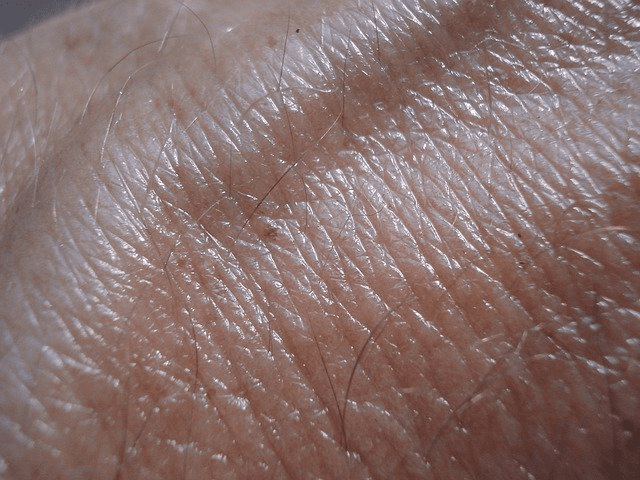Vitamin D levels and proper thyroid function are highly correlated with one another! Sunlight is widely recognized as among the best, most accessible, most dependable, and most natural sources of vitamin D.
This type of vitamin benefits the health of many different body parts, including our cells, muscles, and bones. It also has a significant impact on the functioning of both the immune and thyroid system.
In this article, we will discuss the importance of Vitamin D from the sun to our thyroid health and general wellness.

Simply put, what is vitamin D? Can you get Vitamin D from sunlight?
Vitamin D is an indispensable nutrient and a hormone precursor involved in a wide variety of vital biochemical processes that occur inside the body. With sunlight exposure, our bodies manufacture and synthesize vitamin D from cholesterol using this process. Fatty fish and dairy products fortified with vitamin D are two examples of foods containing this important vitamin.
Vitamin D is essential for maintaining good health in general, particularly bone health. In addition, it plays a crucial role in ensuring that a variety of essential organs, such as the muscles, heart, lungs, and brain, function correctly and that the immune system is in good shape to fight off infections.
Researchers who were responsible for a meta-analysis in 2013 found that those with low vitamin D levels had a significantly higher chance of suffering from depression. These vital vitamin D receptors are located in the brain’s same regions connected with depression.
Regular sun exposure results in the production of the body’s vitamin D. On the other hand, sufficient vitamin D can be received in quantities from dietary supplements, and just a few foods contain even a trace amount of the nutrient.
What exactly does vitamin D do?
Vitamin D stands out from the crowd of other vitamins. While the human body has to consume a variety of meals to get an adequate amount of these other vitamins, vitamin D production is produced by sun exposure.
When the body absorbs vitamin D, it converts that vitamin D into a hormone termed activated vitamin D or calcitriol, depending on whose name you look up.
Vitamin D is essential for absorbing calcium, phosphorus, and other minerals and plays a significant role in maintaining healthy bones. These minerals cannot be taken into the body if there is insufficient vitamin D in the diet.
Vitamin D is essential to one’s overall well-being. Recent studies have shown that it may be necessary for a wide variety of other functions as well, in addition to its role in maintaining healthy bones.
There are between 3,000 and 30,000 genes in our body that are affected by vitamin D. You may already be aware that it is vital for assisting our body in absorbing calcium and strengthening our bones. Still, it also plays an integral part in maintaining the delicate balance of our immune system, which is another reason it is necessary.
Vitamin D deficiencies are linked to abnormal immunological function, while adequate vitamin D levels may prevent and modify the development of autoimmunity.
What Is Meant When We Talk About Vitamin D Deficiency?
Although estimates can be somewhat variable, some research suggests that approximately forty percent of adults have insufficient vitamin D levels. Certain risk factors, such as being overweight, not having completed college, not drinking milk daily, and being of African American or Hispanic descent, are related to lower levels. African American and Hispanic populations have greater rates of vitamin D insufficiency.
Scientists believe that insufficient levels of vitamin D may be one of the potential reasons why autoimmune conditions are more likely to cluster in regions that are further from the equator. This is because vitamin D is primarily absorbed through sunshine on skin that is unprotected by sunscreen.
If you want to make sure you’re getting enough vitamin D, head to a sunny place! People who live in warm climates have a better chance of absorbing enough vitamin D from the sun. However, even people who live in sunny places like Southern California, Florida, and Arizona can have vitamin D deficiency at rates that are comparable to those of people who live in Wisconsin or Minnesota. It’s not enough to just live in sunny place, you still need to get outside to get suns’ blessing!
Another fact is that our bodies can only absorb a small amount of the vitamins from the food we eat. This problem is frequently made worse by deficits in digestive enzymes and gastrointestinal diseases that cause problems with nutrient absorption (such as infections and bacterial overgrowth).
Because of increased skin cancer awareness/scare (people wear sunscreen), most of us are not obtaining enough vitamin D through skin absorption. As a consequence of this, a lack of vitamin D is one of the most under-recognized deficits in modern society, and it is estimated that up to 85 percent of Americans have vitamin D deficiencies.

How much vitamin D do we require?
Food choices are irrelevant to achieving optimal vitamin D levels. It is recommended that you expose your skin to sunshine frequently. You may also need to take vitamin D supplements to ensure you get the recommended daily amount of vitamin D.
While public health recommendations to limit time spent in the sun and to use sunscreen to prevent UV radiation damage be effective, there has been some exaggerated concern that these measures will prevent skin cancer. A short time spent in the sun without sunscreen is safe and can help your body produce vitamin D.
Vitamin D is recommended at varying doses by different groups, with daily needs ranging from 200 to 1000 IU (International Units).
The UK National Health Service recommends that everyone over the age of one take a vitamin D supplement containing 10 micrograms daily (400IU). This varies with factors such as the wearer’s skin tone, the season, the location, and the clothes worn. Some experts suggest that 400 IU a day will not provide you with all the vitamin d that your body needs.
Are there health consequences from vitamin D deficiency?
A lack of vitamin D has been associated with several disorders, including osteoporosis, skeletal deformities, cardiovascular disease, some types of cancer, autoimmune conditions, and a reduction in muscle strength. However, there is a dearth of information that can firmly prove a definitive involvement for vitamin D insufficiency in the development of these numerous illnesses.
Low levels of this vitamin have been linked to a variety of ailments, including depression, autoimmune diseases, and, more recently, thyroid conditions such as Hashimoto’s disease. Heart disease is another one of these diseases. What’s even more scary is the fact, that vitamin D deficient people have higher all cause mortality than people with sufficient level of the sun vitamin.
The link between vitamin D deficiency in the body and the thyroid diseases
There is mounting evidence to support the hypothesis that a deficiency in this vitamin could contribute to the development of thyroid problems. For example, a lack of this vitamin has been linked to an increased risk of developing autoimmune thyroid disorders like Hashimoto’s thyroiditis and Grave’s disease.
Hashimoto’s thyroiditis is the most common cause of hypothyroidism (underactive thyroid), and Grave’s disease is characterized by an overactive thyroid. Research has also suggested a possible link between vitamin D deficiency and depression.
Vitamin D is an essential nutrient that not only controls calcium levels but also possesses a wide variety of other advantageous properties. Patients who suffer from hypothyroidism are more likely to have low levels of vitamin D, according to the findings of a number of studies that were published more than 20 years ago.
Not many endocrinologists are aware of this fact. This could potentially result in bone abnormalities that are associated with hypothyroidism. According to the findings of one study, patients with autoimmune thyroid disease had much lower levels of vitamin D than healthy participants did (just under 31 percent), indicating that vitamin D levels were significantly lower in the former group.
Similarly, a study that was conducted in Greece on persons who had Hashimoto’s thyroiditis found that over 85% of them had low levels of vitamin D, in addition to high levels of anti-thyroid antibodies.
It was hypothesized that patients with hypothyroidism might have low levels of vitamin D for one of two reasons: 1) the low levels of vitamin D might be related to inadequate absorption of vitamin D from the gut, or 2) the body might not activate vitamin D in the correct manner.
As mentioned above, patients with Graves disease have been shown in other research to have deficient levels of vitamin D. It is essential to note that vitamin D and thyroid hormone both have the ability to bind to a class of receptors known as steroid hormone receptors.
It was discovered that a different gene in the vitamin D receptor makes people more likely to develop autoimmune thyroid diseases like Graves’ disease and Hashimoto’s thyroiditis. Because of these factors, it is essential for patients who suffer from thyroid conditions to have an understanding of how the vitamin D system operates.
How can hypothyroidism patients improve vitamin d deficiency
1. Get outside for natural Vitamin D production and do not too panic skin cancer
Sun exposure is considered to be among the most effective methods for regaining optimal levels of vitamin D. (Not only may exposure to sunlight improve your mood, but it also helps modulate your immune system, which is a double win.)
When skin absorbs sun’s ultraviolet rays, it stimulates the creation of sunshine vitamin. Too much concerns about skin cancer may be contributing to the increase in low vitamin D levels.
Vitamin D proponents propose 15 minutes of not too much sun exposure on unprotected skin. Mild sun exposure is unlikely to increase the risk of skin cancer, but it can help prevent vitamin D deficiency.
Would you mind if I suggested that you take a stroll during your lunch break? It is possible that you will need to begin at a slower pace if you have fair skin and are not used to being in the sun. To avoid getting a sunburn, avoid exposing oneself to the sun for longer than necessary.
On the other hand, there are many in the medical field who believe that in extreme cases of vitamin D insufficiency, the only way to achieve enough levels of the vitamin would be to expose oneself to the sun on a sunny beach for four to six hours every day, continuously for seven days.
However, many of us simply are unable to make it to the beach and live in environments that do not allow us to receive enough amount of sun exposure throughout the year. Because of this, we will need to look for other sources of vitamin D in order to meet our needs.
It is the time of year when I advocate beach vacations to those of us who live in northern climates, but I recognize that this isn’t always possible for many people and that it is probably not going to be possible during the government shutdown. As a result, we need to spend as much time as possible in the sun and put a lot of effort into our diets while also taking nutritional supplements.
2. Food
Sources of vitamin D rich foods include wild salmon (which has 800 International Units of D3 per 3.5 ounces), cod liver oil (which contains 700 International Units per teaspoon), oily fish, beef liver, fortified dairy products and orange juice, and egg yolks. It is easy to increase your vitamin d intake by choosing those foods.
However, the amount of vitamin D level that our bodies are able to absorb from food is limited, and those who suffer from fat malabsorption, food allergies, and other digestive disorders that are common in Hashimoto’s disease may have an even more impaired ability to absorb nutrients.
Additionally, dairy products, eggs, and sugary drinks can be troublesome for persons who have Hashimoto’s disease and issues with blood sugar; therefore, doctors do not recommend relying on these items to boost vitamin D.
Because of this, taking supplements can be a very useful option, and because of this, more vitamin D supplements is recommended for the majority of people who have Hashimoto’s disease.
3. Supplements and drug
Because there are very few foods containing this vitamin and some individuals are unable to go out in the sun. They can consider taking a vitamin D3 supplement that can be taken orally.
Since it has been demonstrated that the recommended daily dose of 400 IU of vitamin D is insufficient for the majority of people or 5,000 IU per day as a starting point for patients who have Hashimoto’s disease. A 30–50 percent increase in vitamin D absorption can be achieved by taking dietary supplements containing more vitamin D in conjunction with food containing fat.
Besides going outside for natural Vitamin D, food, and supplements, hypothyroid patients also should go to the doctor regularly and consider using a superior form of hypothyroidism treatment including Natural Desiccated Thyroid with trending products like Real Thyroid and VitaliThy.
They are all strongly recommended by holistic doctors and experts.

Conclusion
Vitamin D and thyroid function are inextricably linked. Sunlight is one of the most effective, abundant, dependable, and natural sources of vitamin D. So besides taking sufficient food containing Vitamin D, and supplements, please go outside to get sunlight vitamin.